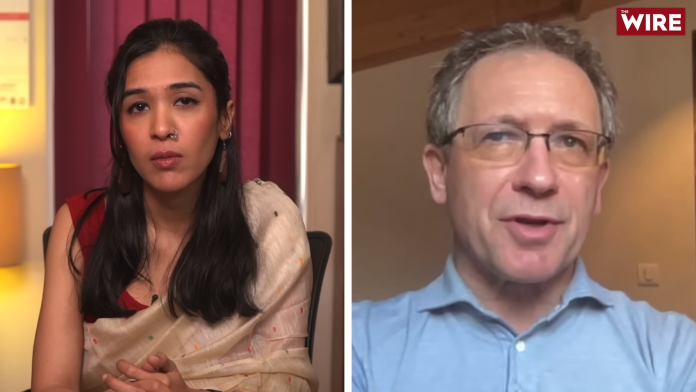
Christophe Jaffrelot, who has written about the economic and social developments in Gujarat, Bihar, and Tamil Nadu over a recent ten-year period, warns of poor capital accumulation in the economy and the relatively low current investment rate of 27%. According to him, India needs an investment rate of 36% (which it was in the first decade of the century) and more investment in small and medium enterprises that create employment rather than the jobless growth of megaprojects.
He recommends much greater attention and investment in education, fearing that not enough jobs are being created, and in thirty or forty years from now, with the population possibly reaching 1.7 billion, the problems of joblessness and hunger will drive more Indians to migrate. He reiterates the direct correlation between education and population growth – fearing that Bihar and the Hindi belt as a whole will soon have hegemony in the parliament where seats are allocated to states based on population.
This is creating a great imbalance with the Southern states that have better education and social indicators and have been able to limit their population growth. The southern states feel that the impending imbalance in parliamentary seats is a disincentive to their investments in education and social programs. The chief ministers of two Southern states are already trying to motivate their electorates to produce more children.
Are the print and packaging industries defying gravity?
When we look at the Indian packaging industry from several angles such as the recent Printpack exhibition, which was a success in terms of attendance by small, medium, and large visitors, or our recent visits to several packaging industry plants and interactions with industry leaders, we only see growth. Growth in the new construction and extension of plants by equipment and consumable suppliers – and growth in plants and capacity creation by printers and packaging converters.
The exhibitors and visitors at Printpack came from all types of enterprises – small, medium, large, and very large. This indicates that the printing and packaging industry is extremely diverse – in the products it produces, the equipment and raw materials it uses, and the levels of technology it uses.
This high level of investment and capacity creation in our industries is taking place when the economic growth is relatively flat, somewhere around 6%. This cannot happen without demand. The implication is that print and packaging are basic to society and business and that even with low government expenditure on education they continue to drive demand. Or that our industries are answering critical economic needs that have turned into demand. The reasonably good growth of paper production in the past 25 years, in a country with poor raw materials, reflects this transformation.
The investments in packaging by converters are based on their confidence in a consumption-led economy, and the logic that increased urbanization, and even decreased incomes are bound to increase the demand for a wider variety of smaller packs. The converters see no lack of capital nor demand, but ironically, they see a shortage of skilled human resources and hence see automation as one of the solutions.
The sustainability paradox
Another conversation that we have wherever we go is about the seriousness of the packaging industry regarding sustainability, recycling, and the circular economy. The extended user responsibility rules of plastic packaging and waste were notified in February 2022 and are expected to be enforced with more intense accountability and financial penalties from 1 April 2025.
On the one hand, we encounter great skepticism and doubt among brand owners and converters who are waiting for the government to start enforcement – compliances beginning with industry data reporting on its web portal, and then followed by the specific financial penalties for not meeting the levels of recycling and recycled material use. They are also waiting for the recognition of waste collection at source, sorting, and the establishment of appropriate recycling streams.
And on the other hand, we see seriousness, accompanied by investments in new recyclable structures and consumables. We also see some research and development but not nearly enough in our industry. Nevertheless, our industry could easily become a leader in a country where the R&D expenditure by both industry and government is negligible.









